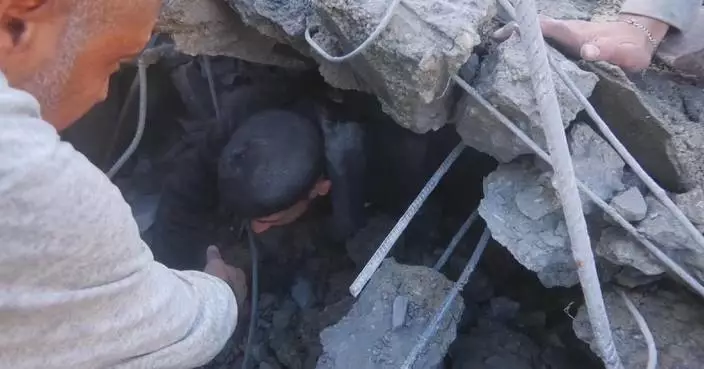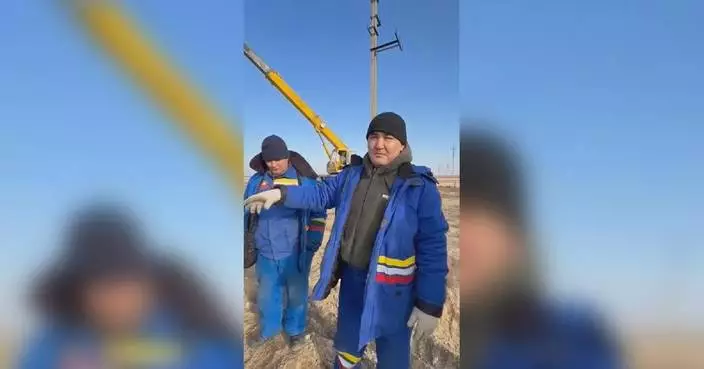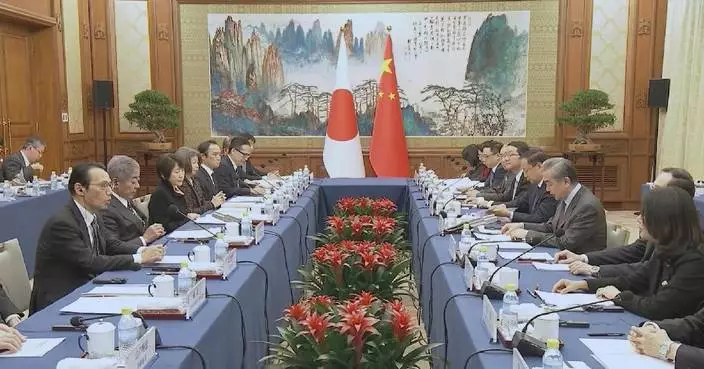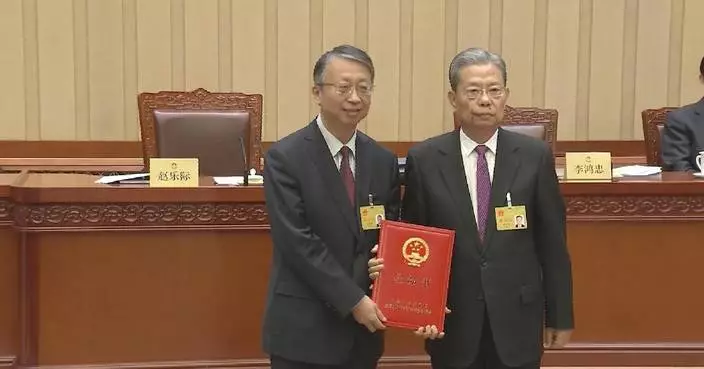Advanced warplanes of the Eastern Theater Command of the Chinese People's Liberation Army (PLA) joined the "Joint Sword-2024B" drills in the Taiwan Strait and the north, south and east of the island of Taiwan on Monday.
The warplanes included fighter jets and batches of H-6K bombers with live ammunition.
"The core task for me and my comrade-in-arms in the drills is to break through the simulated enemy's air defense alert system, seize battlefield control, and directly test the real combat capabilities including airspace alert, air combat and in-flight refueling. We want to use a language comprehensible for the enemy and warn separatist force in Taiwan that those engaging in separatist activities will cause war, get burned for playing with fire, and bring destruction to themselves," said Wei Cao, a pilot with the PLA Eastern Theater Command.
Troops of the PLA rocket force launched multiple rounds of simulated strikes with multi-type missiles of large amounts.
The Chinese PLA Eastern Theater Command on Monday organized its troops of army, navy, air force and rocket force to conduct the "Joint Sword-2024B" drills around the island of Taiwan, said Li Xi, spokesperson for the theater command, noting the drills involve vessels and planes closing in on the island from multiple directions and assaults by joint forces.
The drills focus on joint sea-air combat readiness patrol, the blockade and control of key ports and areas, strikes on sea and land targets, and the seizure of comprehensive battlefield control, so as to test the joint real-combat capabilities of the forces of the command, Li said.
The drills are a powerful deterrent to the secession activities in Taiwan, and are legitimate and necessary actions to safeguard national sovereignty and national unity, Li said.
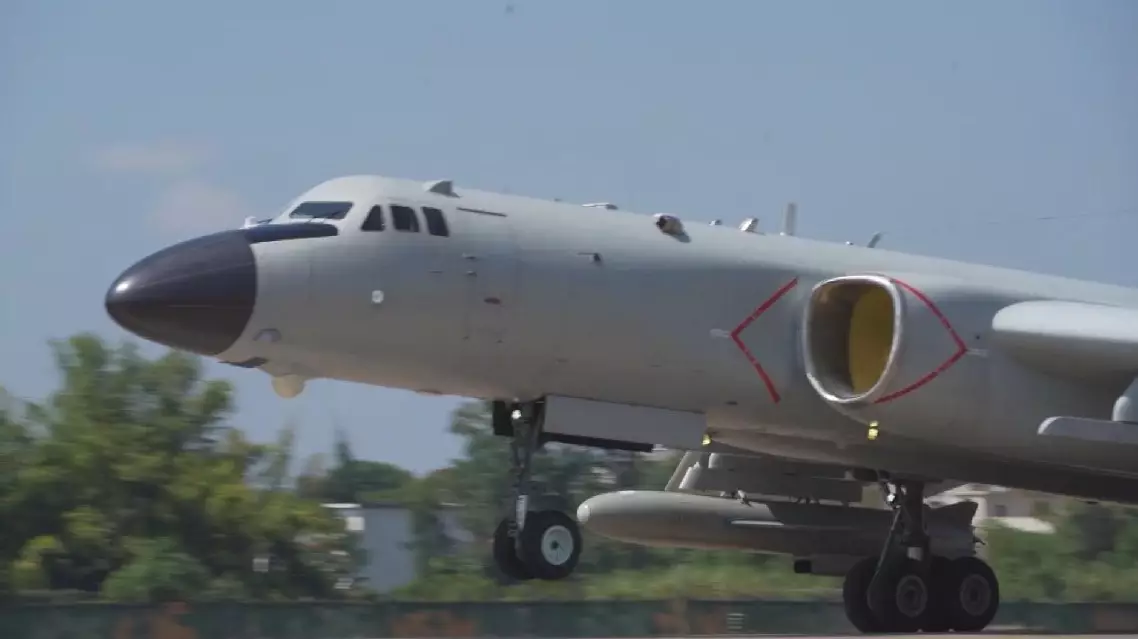
Advanced warplanes join drills around Taiwan island
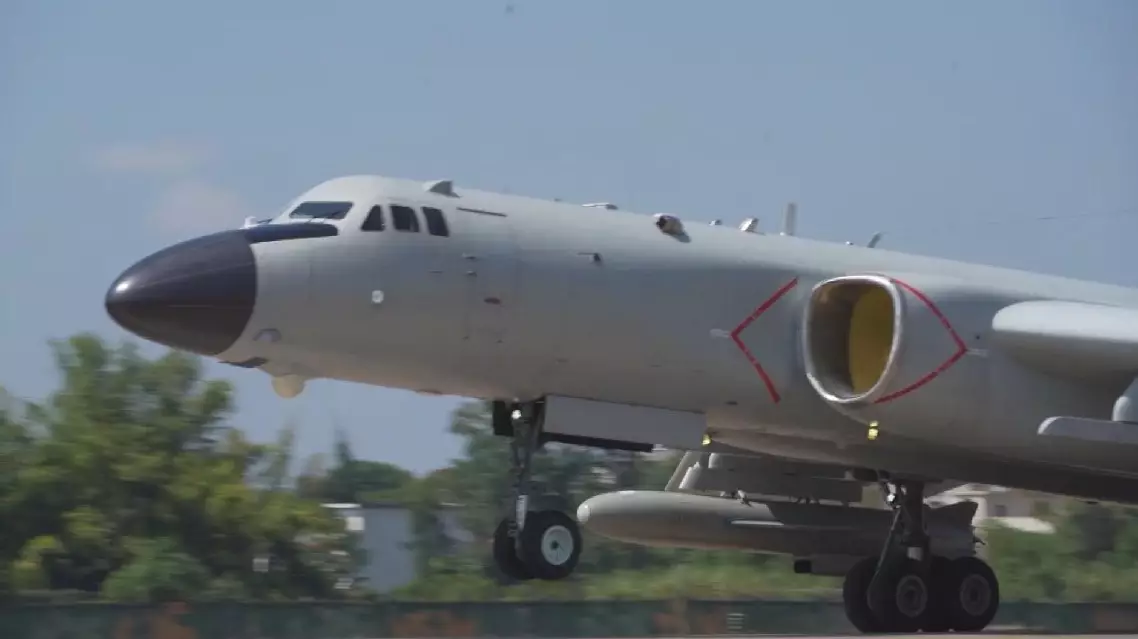
Advanced warplanes join drills around Taiwan island
The cybercrime rate in the Philippines increased during the Christmas Holiday Season as more Filipinos opted for the convenience of online shopping, shifting from physical stores to virtual carts.
A recent study by cybersecurity firm Kaspersky revealed a staggering 40 percent increase in online shopping scams globally during the holiday season. In the Philippines, cases of phishing and fake e-commerce websites are on the rise.
Margaret Esguerra is among the victims of a phishing scam linked to GCash, the country's largest e-wallet.
She lost 53,000 pesos after receiving an SMS about an insurance fee, sent from what appeared to be an official GCash number.
"Since the SMS came from their official account, I trusted the source and I didn't want to be charged, so I clicked it and in one minute they wiped out my account that's 53,000 pesos," said Margarett Esguerra, an Online scam victim.
Art Samaniego from Scam Watch Pilipinas, a cybersecurity advocacy group, explains how scammers are able to commit this type of fraud.
"It's called a stingray attack or IMSI, I-M-S-I attack wherein cybercriminals have this small equipment that would make your connection lose connection to 5G or 4G networks. It will downgrade your connection and it will trick your cellphone to connect to their fake base station and when you are connected to that fake base station, what will happen is that they can now control, they can now see what you are doing," said Samaniego.
Numerous GCash users reported losing money overnight, even without clicking on suspicious links. GCash attributed the issue to a technical glitch and stated that funds were refunded to affected customers.
However, not everyone got their money back. Esguerra was unable to recover her 53,000 pesos. The company claimed that Esguerra shared her one-time password on a phishing link and advised her to pursue the merchant directly for a refund.
"It should have been returned. I waited, I patiently waited for their investigation. I was really hoping that they would give it back because I showed all the evidence. It's hard-earned money. It's very difficult to accept," said Esguerra.
A recent study by analysis firm TransUnion also revealed that the Philippines is experiencing an average fraud rate of 13.6 percent, significantly higher than the global average of 4.6 percent.
"The government is doing something about this. The ICD, CICC and the law enforcement agencies are doing projects to answer (to) these scams and cybercrimes, but the problem is some of these crimes are technology-dependent," said Samaniego.
GCash has released warnings, reminding the public to stay vigilant against online scams. In a statement, the company said it has been continuously investing in the latest security technologies to combat fraud. Meta has also launched a worldwide anti-scam awareness campaign aimed at protecting users from fraudulent schemes during the holiday shopping season.
Cybersecurity experts urge everyone to double-check the legitimacy of websites, avoid clicking on suspicious links, and use secure payment methods.

Rising cybercrimes target Filipino shoppers






